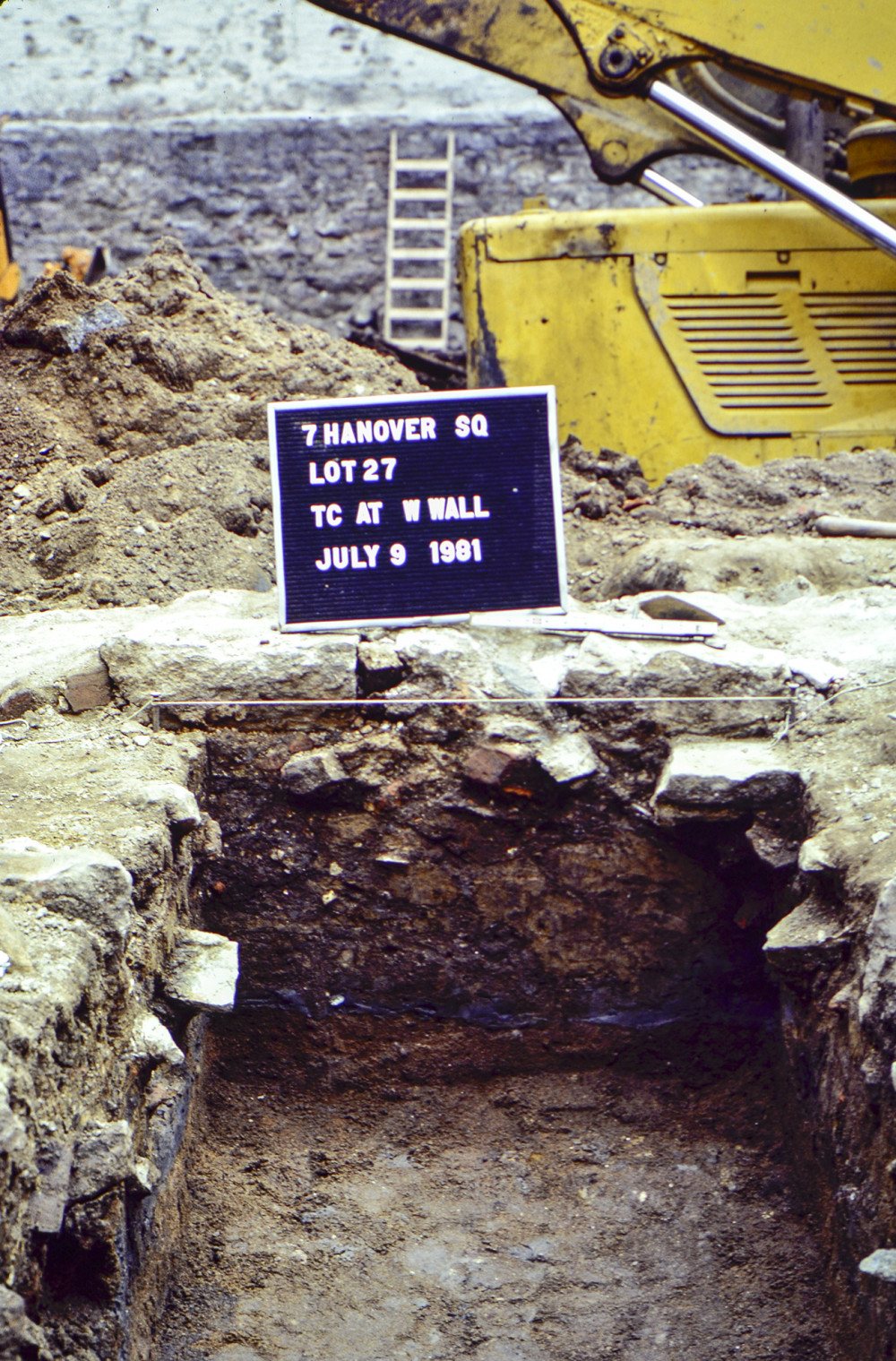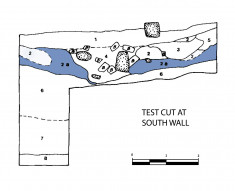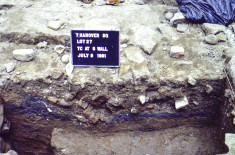This context (Catalog #1171, Lot 27*, Test Cut AT, Strat 5, Level a) consists of artifacts recovered from a layer of blue/gray clay, located beneath a drainage sump or privy feature in Lot 27*, adjacent to the Lot 26* boundary wall. Test Cut AT was placed in this area and measured two feet and a half by six feet. Excavation began one and a third feet below the wooden basement floor of building #2. The excavators uncovered what appeared to be part of a circular stone feature. The area lying within the stone ring was in the eastern portion of the test cut, and the feature was cut off outside of the boundaries of the test cut. It is likely that the feature was associated with the building phase prior to the construction of building #3. To the south of the feature, it was likely cut off by the installation of stone slabs associated with one of the later building phases.
The remaining part of the feature only consisted of one coarse of stones that were embedded in the brown silty sand with mortar that constituted the uppermost deposit excavated in the test cut. The deposit sloped downward from west to east and was between two to six inches thick. At a depth of approximately six inches below the excavation surface, there was a pit dug to a deeper level within the feature near its western border. The soil was similar to the brown silty sand that overlay it, but appeared to include more cut stone and cobbles. It was thought that the pit was a deeper extension of the hole dug to install the feature. Beneath these deposits and the deposit associated with the installation of the feature, a layer of blue/gray clay was uncovered. The underlying blue/gray clay stratum abutted the fieldstone wall in the eastern part of the test cut. This wall extended approximately six inches into the test cut.
Only a small portion of the blue/gray clay was excavated separately, and only one dated sherd was recovered from this deposit. This sherd was an underglaze painted 18th-century Chinese export Porcelain rim sherd with a brown washed rim. The presence of this ceramic type, with an initial date of manufacture of 1700, suggests that the blue clay stratum was not part of the underlying landfill. The clay may have been deposited in the basement of building #5 or an earlier, post-landfill structure to seal out moisture. A similar deposit of clay was encountered in Lot 14. The landfill deposits, consisting of reddish-brown sand, began beneath the blue/gray clay stratum. For more information about the deposits associated with Lot 27*, please read pages 22 to 112 of the 7 Hanover Square site report.
-
Collection method
This context was excavated using shovels and trowels. Two buckets of soil were dry screened using 1/4 inch mesh with great difficulty. Removed some additional artifacts from unscreened buckets.
-
Soil
Blue gray clay, brown sand, yellow silt






